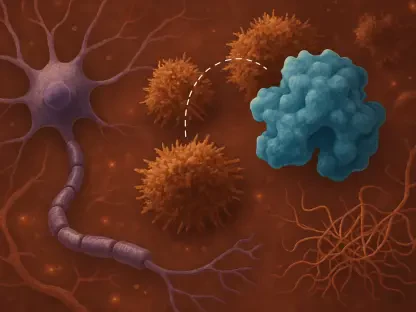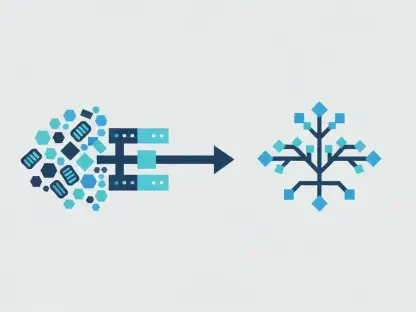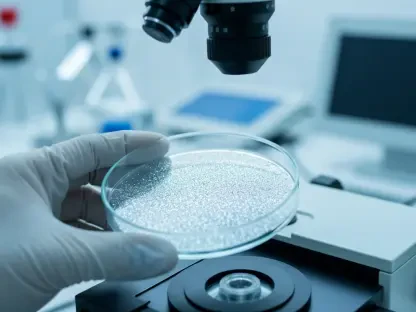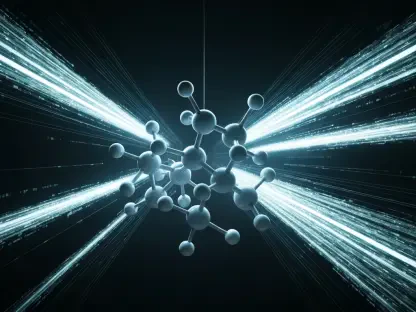In the rapidly progressing world of biomedical science, imaging technologies play a pivotal role in unlocking the mysteries of human health. Over the last few years, lipid imaging mass spectrometry has emerged as a groundbreaking tool, offering unprecedented insights into the complex nature of lipids within biological tissues. As experts continue to explore the miniaturized world within us, this technology holds the key to revolutionizing our understanding of various physiological and pathological processes.
Unveiling the Intricacies of Lipid Imaging Mass Spectrometry
Lipid imaging mass spectrometry combines the detailed molecular analysis capabilities of mass spectrometry with the spatial resolution of imaging techniques. By converting tissue samples into unique spectral images, it allows researchers to visualize and map the distribution of lipids at a molecular level. This ability to provide invaluable spatial information about lipid composition across tissues has marked a significant evolution in the approach toward biomedical research, especially concerning disease diagnosis and treatment.
The technology has evolved significantly, propelled by advancements such as matrix-assisted laser desorption/ionization (MALDI). This technique enables effective desorption and ionization of molecules without causing fragmentation, cementing its place as a cornerstone in lipid analysis. By identifying and localizing specific lipid species in tissues, MALDI and similar techniques provide a deep understanding of cellular processes, aiding researchers in associating structural lipids with specific cellular functions.
Advancements in Lipid Mapping and Imaging Techniques
Through lipid mapping, scientists can probe deeper into lipid profiles and uncover insights into cellular architecture and chemical diversity. These capabilities are paramount in identifying distinctive lipid markers that may be indicative of health statuses or diseases. Detailed technical refinement in recent years has led to enhancements in spatial resolution and sensitivity, allowing even the most intricate lipid distributions to be captured with accuracy and precision.
The performance characteristics of lipid imaging mass spectrometry are impressive, with the technology increasingly being applied to study diverse biological systems. This breadth of application, paired with its ability to process numerous samples from populations or clinical studies, underscores its transformative potential in research settings and beyond.
Current Trends and Future Directions
Lipid imaging mass spectrometry is a rapidly evolving field, with recent advances revealing new methods and applications. Improvements in machine learning and data analytics have enhanced the interpretability of results, enabling the discovery of intricate patterns and biomarkers. There is a growing trend toward integrating this technology with other imaging modalities to provide comprehensive, multimodal insights into biological systems.
Emerging applications highlight the integration of diverse technological approaches, with a distinct emphasis on personalized medicine. As researchers and industries continue to leverage lipid imaging mass spectrometry, the technology’s trajectory seems firmly locked on a path of growth and innovation.
Practical Applications Beyond the Research Lab
The impact of lipid imaging mass spectrometry extends well beyond academic research. Several industries, including pharmaceuticals, diagnostics, and clinical research, have begun harnessing its potential. For instance, drug discovery and metabolic disease studies have greatly benefited from detailed lipidomic insights, facilitating the development of targeted therapies and precision diagnostics.
Noteworthy are the implementations in nephrology, where lipid imaging provides a virtual atlas of the kidney’s molecular landscape. These detailed maps have strong implications for interventions targeted at renal pathologies, offering a template for exploring organ-specific lipid functions in health and disease.
Challenges and Hurdles to Overcome
Despite promising advancements, lipid imaging mass spectrometry faces several challenges. Technical complexities regarding data processing and interpretation remain significant hurdles. The need for standardized protocols and regulatory approval is another layer that requires careful navigation.
However, the field is not stagnant. Continuous efforts in engineering solutions, regulatory discussions, and collaborative research strategies are underway to address these limitations. Development efforts are aligned toward refinement and enhancement, paving the way for broader adoption and integration.
Charting the Path Forward
The future looks promising for lipid imaging mass spectrometry, with ongoing research poised to further expand its capabilities. Upcoming breakthroughs could potentially involve higher resolution imaging, improved throughput, and real-time analysis. The technology’s long-term impact is likely to ripple across both scientific research and healthcare industries, pushing the boundaries of what is currently conceivable.
Culminating Insights
As lipid imaging mass spectrometry continues to shape the landscape of biomedical research, its transformative power is increasingly evident. The technology’s ability to offer spatially resolved lipidomic profiles presents unparalleled opportunities for discovery and innovation. Future advancements will likely foster new diagnostic markers and therapeutic interventions, ensuring that this innovation remains an essential component in unraveling the complexities of human biology.









